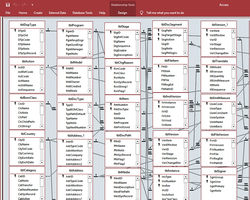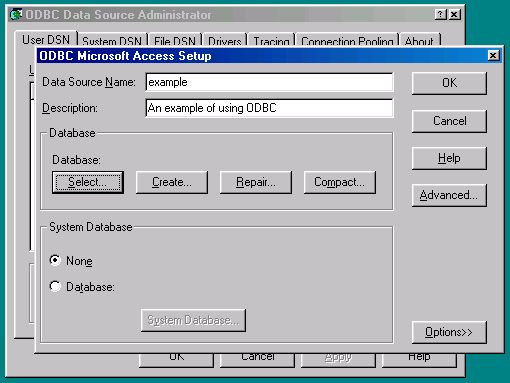

The customer form might have a button which opens an order form where you can enter a new order for that customer.įorms also allow you to control how other users interact with the data in the database. For example, you might have a form named "Customer Form" in which you work with customer data. You can program command buttons to determine which data appears on the form, open other forms or reports, or perform a variety of other tasks. However, most database users prefer to use forms for viewing, entering, and editing data in the tables. You can create a database without using forms by simply editing your data in the table datasheets. Forms often contain command buttons and other controls that perform various tasks. Formsįorms allow you to create a user interface in which you can enter and edit your data. Each piece of information on an individual card (author, title, and so on) corresponds to a field in the database.įor more information about tables, see the article Introduction to tables. Each card in the cabinet corresponds to a record in the database. Fields must be designated as a certain data type, whether it's text, date or time, number, or some other type.Īnother way to describe records and fields is to visualize a library's old-style card catalog. For example, you might have a table named "Employees" where each record (row) contains information about a different employee, and each field (column) contains a different type of information, such as first name, last name, address, and so on.

Fields correspond to the columns in the table. Each record consists of one or more fields. Records are where the individual pieces of information are stored. This process is called normalization.Įach row in a table is referred to as a record. Data about products will be stored in its own table, and data about branch offices will be stored in another table. For example, if you're storing information about employees, each employee should only need to be entered once in a table that is set up just to hold employee data. To get the most flexibility out of a database, the data needs to be organized into tables so that redundancies don't occur. The main difference between storing your data in a spreadsheet and storing it in a database is in how the data is organized. As a result, it is usually quite easy to import a spreadsheet into a database table. The following sections are short descriptions of the parts of a typical Access database.Ī database table is similar in appearance to a spreadsheet, in that data is stored in rows and columns. Share the data with others via reports, e-mail messages, an intranet, or the Internet

Organize and view the data in different ways You can use Access 2016, Access 2013, Access 2010, or Access 2007 to create files in earlier file formats (for example, Access 2000 and Access 2002-2003).Īdd new data to a database, such as a new item in an inventoryĮdit existing data in the database, such as changing the current location of an itemĭelete information, perhaps if an item is sold or discarded accdb, and databases created in earlier Access formats have the file extension. Databases created in the Access 2007 format (which is also used by Access, 2016, Access 2013 and Access 2010) have the file extension.
MICROSOFT ACCESS DATABASE SYSTEM CODE
Unless it has been specifically designed to use data or code from another source, an Access database stores its tables in a single file, along with other objects, such as forms, reports, macros, and modules. For example, an inventory tracking system that uses three tables is not three databases, but one database that contains three tables. One database can contain more than one table. Once these problems start to appear, it's a good idea to transfer the data to a database created by a database management system (DBMS), such as Access.Ī computerized database is a container of objects. The data becomes hard to understand in list form, and there are limited ways of searching or pulling subsets of data out for review.

As the list grows bigger, redundancies and inconsistencies begin to appear in the data. Many databases start as a list in a word-processing program or spreadsheet. Databases can store information about people, products, orders, or anything else. In this articleĪ database is a tool for collecting and organizing information. The terminology is geared toward Microsoft Access databases, but the concepts apply to all database products. This article provides a brief overview of databases - what they are, why you might want to use one, and what the different parts of a database do. Access for Microsoft 365 Access 2021 Access 2019 Access 2016 Access 2013 Access 2010 Access 2007 More.


 0 kommentar(er)
0 kommentar(er)
